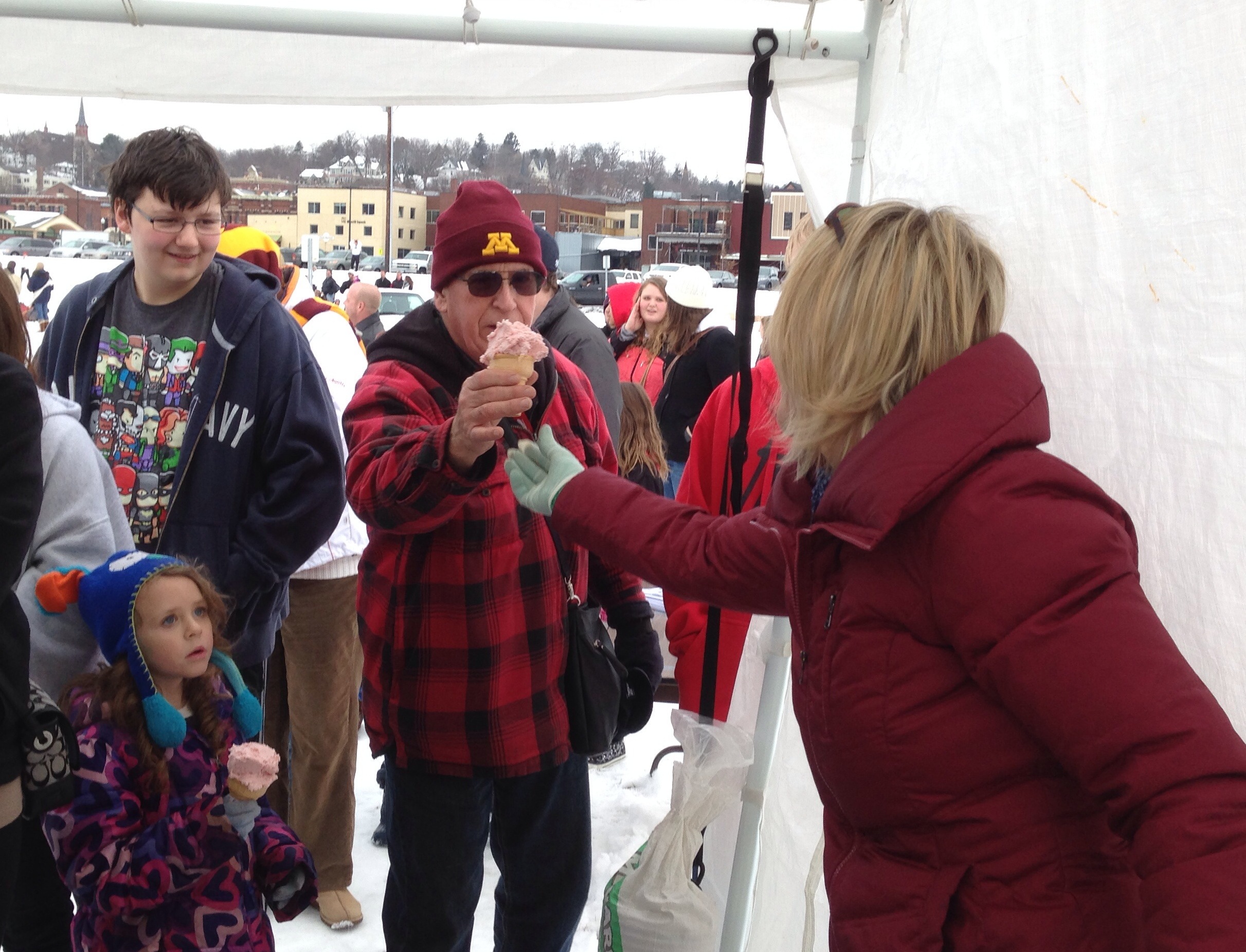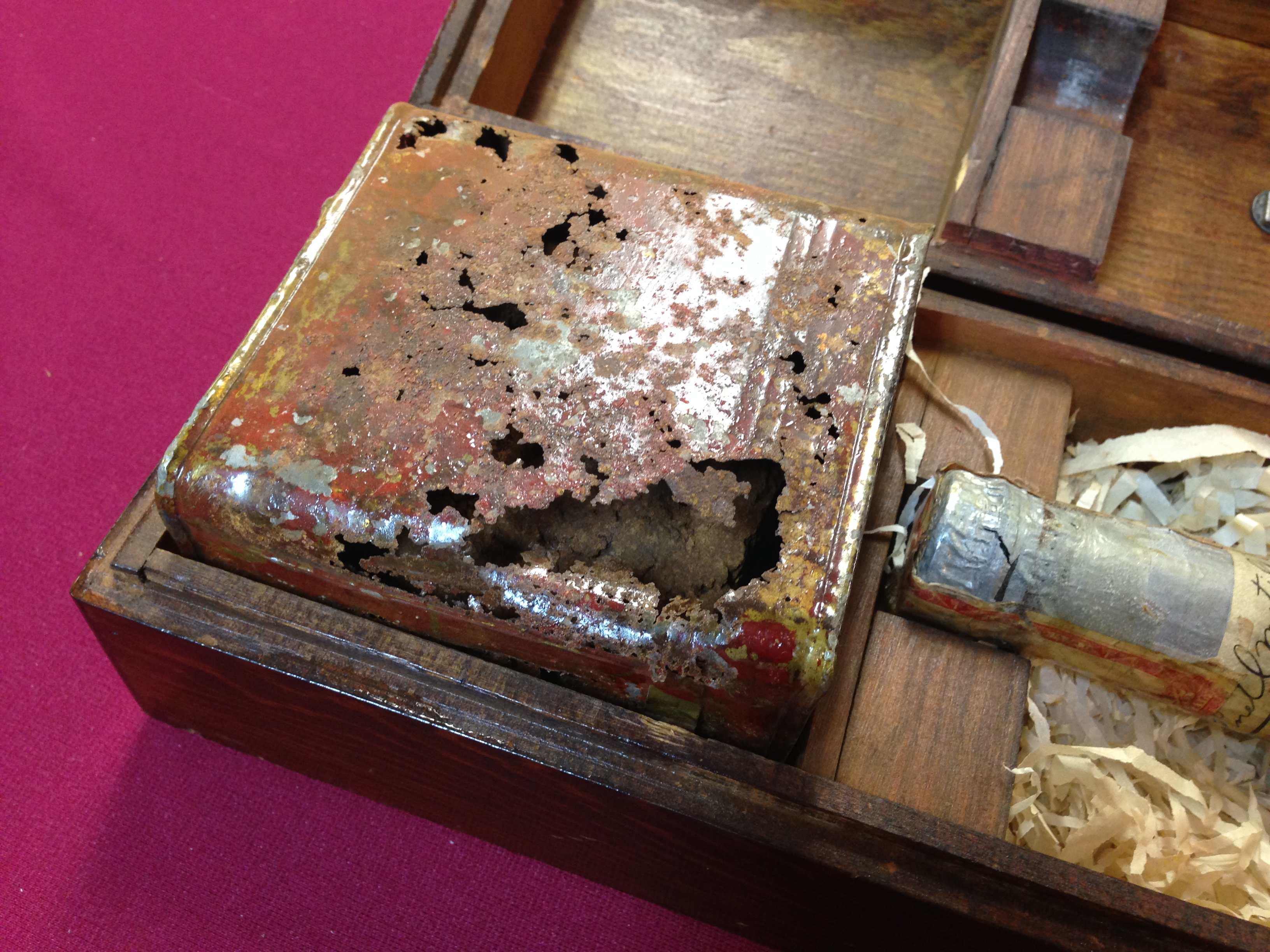Receive the Historical Messenger in your inbox once every two weeks by signing up for our mailing list!
|
This issue: Contents
Tuesday, December 15th, 2015
Editor’s NoteWell it looks like my comments last issue about the arrival of winter were a bit premature. “I’m Dreaming of a Rainy Christmas” just doesn’t have the same ring to it, does it? Either way, thank you everyone who attended this past weekend’s Annual Holiday Event! We had a great turn out and it was an absolute pleasure getting to chat with you lovely folks in person one more time in 2015! Not that we won’t be hitting the ground running next year…Be sure to check out our first News Story to find out the best way to start your 2016! We’ll also satisfy your hunger for historical curiosities with another round of “What Is This Thing?!” In today’s Old News, you’ll get a good reminder that biased journalism is not an invention of the 21st century. Finally, we’ll stay in Minnesota’s past as we read how one of Stillwater’s earliest settlers celebrated Christmas on the frontier. Happy Holidays everyone! Want to learn more about the history of Washington County? “Like” WCHS on Facebook and follow us on Twitter! Sean Pallas Historical Messenger editor and Warden’s House Site Manager WCHS NewsWinter Ice Cream SocialAre you going to let a little bit of snow and freezing January is the perfect time for an Ice Cream Social! Join WCHS on Saturday, January 16th from Noon – 3:00 PM at the North end of Lowell Park in Stillwater for everyone’s favorite seasonally-inappropriate winter event! With FREE ice cream from Leo’s Malt Shop, you won’t even notice those cold gusts of wind off the river! Don your warmest winter wear, grab your ice skates, and join us in helping continue this fun (but admittedly a bit silly) Stillwater tradition! Coffee will also be provided & chili will be available for a nominal fee. What is This Thing?!
What Is This Thing?! (Round 23) Last issue’s What Is This Thing?! was pretty tricky! It would have been a heck of a lot easier if I would have used this picture showing the device assembled! That’s right! Last week’s mystery artifact is indeed a collapsible lantern! Specifically, it was known as “The ‘Stonebridge’ Folding Lantern’. This particular model has a patent date of November 27th, 1900. This specific lantern was owned by Wade H. Yardley of Marine-on-St. Croix. He used it as a hanging light for his canoe. Congratulations to everyone who was able to illuminate the identity of last week’s challenge! (Don’t mind me if I go after these easy puns. Sometimes I can delude myself into thinking I’m funny.) (…get it? can delude. “can-del-ude”… if you say it out loud that middle bit sounds like “candle”…I’ll see myself out.) Eh hem. Anyways, onto this week’s item! As a bit of a clue to this object’s size, you’ll see the top of a bottle to the right of this particularly rusty object. Can you identify the WCHS artifact photographed above? Can you guess its use? If you’d care to venture an answer, you can send an email to me at spallas.wchs@gmail.com, tweet @WCHSMN, or post your guess on our Facebook page. Good luck! Old NewsAn Awkward TransitionTaking place less than a decade before the Civil War, the transition from Minnesota’s territorial period to its formal statehood was an extremely political and hotly debated process. Way back in November of last year, our featured article discussed how even getting Republicans and Democrats in the same room to form a state constitution was a difficult task in itself. So let’s check in on the state of affairs only a few short months after Republicans and Democrats battled so bitterly over the wording of Minnesota’s constitution. The editor’s of the Stillwater Messenger certainly weren’t trying to hide their opinions. Note: The bold emphasizes are present in the original article. Governor’s Message Delivered – Stillwater Messenger – December 15, 1857 What cannot be done in the name of Democracy? Samuel Medary [Democrat, photo right], Governor of the Territory of Minnesota, has sent in his message to the Legislature of the State of Minnesota – a body with which he has no more right to communicate than has James Buchanan – and the Democratic members, like a set of blundering asses or willing accomplices in usurpation and wrong-doing, even invited him to do so, and then insulted the people of the State by ordering one thousand copies of the document printed at the expense of the future State. The Douglas Democrats may prate and howl about the newly discovered wrongs of Kansas; but we tell them there are just as unscrupulous, defiant, dare-devil politicians in our Capitol at St. Paul, as border ruffianism in Kansas can produce. But there is a day of political judgment coming, when the virtuous people will say to those men – “depart from me, ye accursed villains!” As a matter of history and arrant usurpation for after references, we will publish this message hereafter – our columns being too much pre-occupied to-day. Previous to the delivery of the Message, the Republican Senators entered a manly protest upon the Journal against this high-handed usurpation. They refuse to recognize Gov. Medary as Governor of the State of Minnesota. Let them maintain their position like men, as we know most of them are. Medary is an interloper – an usurper, who has no business whatever in intruding his particular notions upon that body. As Sam Medary, or as Governor Medary, Governor of the Territory, we should treat him with all respect – but when he commences putting on the airs and flourishes of Governor of the State, meddling with business not his own, we would treat him as we would any other meddler and interloper. Featured ArticleThe Valley’s First Christmasby Brent Peterson, WCHS Executive Director The first Christmas held in Stillwater has been a story that has been handed down from family to family. It has been reprinted in newspapers and books, but this first Christmas, celebrated nearly 175 years ago needs once again to be handed down as a heritage present to the readers of the Historical Messenger. It was Lydia Carli, who traveled from Chicago to what is now Stillwater in 1841. She came here and lived in the Tamarack House that was constructed by her half-brother, Joseph R. Brown. It was that Christmas that Mrs. Carli would latter tell about to Mr. A.B. Easton, the publisher of the Stillwater Gazette and the two volume History of the Saint Croix Valley published in 1909: “I suppose I ought to tell you something about the first Christmas celebration ever held in Stillwater. And speaking of that reminds me that several years ago a fellow was here and talked a long time about this old time affair, and then went away and wrote a nice story about it; but made a bad break in the first line by saying there was but one person living in this city who observed Christmas day in 1841. The two children I brought with me are still living, and I am quite sure they were present at that famous Christmas gathering. Yes, you can wager they were strictly in it. “And when it comes to figures and dates he says I was born in 1878, near Lancaster, Pa. Of course, that was the printer’s mistake. Our household at the time mentioned, consisted of Mr. and Mrs. Joseph R. Brown and their three children, Dr. Carli and myself and two children. On the bluff back of us were about a dozen Sioux Indians. I manufactured a lot of incongruous things in the nature of dolls for the little girls and some wonderful zoological impossibilities for the boys, made of dough. We called these Christmas presents. Wouldn’t compare with the glittering treasures that adorn Christmas trees in these modern times. When we came to the subject of the feast my brother suggested that we get up a dinner for the squaws and children in the tepees, and that he would provide for the men and would invite all the inhabitants of the town. “Christmas morning dawned bleak and cold and gray. When I looked out no living thing met my sight; nor did a sound break the solitude. The quagmire now covered by the business part of Stillwater was covered deep with snow, and a desolate white waste stretched away on every side. There were no sound of Christmas bells, no outside greetings to exchange. “The Christmas bill of fare comprised pemmican [thin strips of meat dried in the sun], salt pork, black dried apples, bread, coffee and sugar. The port was of the ‘condemned’ variety. And right here – let me see, in the Bible doesn’t condemned mean the same and damned? The flour sent to us had also been condemned by the government – and no doubt the examiners used the scriptural synonym in speaking of it – and the stuff arrived here in solid chunks, which I had to smash up and sift before using. But notwithstanding all these drawbacks and discouragements the day and the dinner were merry. “The table had no covering of cloth; we didn’t use one for the reason that in the winter it would freeze to the table if anything wet was spilled on it. The Indian guests were not only all eyes and ears in wonder and expectation, but pretty near all mouths when it came to the business of eating. The squaws were on their best behavior, if you know what that is, and if one of them spilled her coffee she scooped it up with remarkable agility. “It is hardly necessary to remark that we were shy on napkins. “But everything passed off pleasantly and the three of us who are yet living who participated in this first Christmas gathering in this city often revert to the occasion as one of the memorable events in our checkered lives.” Mrs. Carli would died in 1905, but leaving a legacy of Stillwater’s First Christmas for the pages of newspapers, books and local history for generations to come. |
 temperatures keep you indoors?! Of course not! We’re Minnesotans!
temperatures keep you indoors?! Of course not! We’re Minnesotans!
